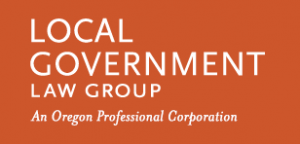Conducting a 360-Degree Review for Local Government Upper-Level Managers/Supervisors
Diana Moffat
From our Fall 2015 e-newsletter
As we enter a new fiscal year, have you given thought to conducting a performance evaluation on your upper-level managers, supervisors, department heads?
Getting performance feedback benefits our upper level management staff, just as it benefits our other employees. For upper level management, other than City Managers, County Administrators or Fire Chiefs, a variation of the traditional employee performance evaluation is often recommended. In such instances a 360-degree (multi source) assessment can be employed. A 360-degree evaluation is contrasted with upward feedback, where managers are given feedback only by their direct reports, or a traditional performance appraisal where the employees are most often reviewed only by their managers. Those types of reviews involve the manager receiving feedback from a single perspective.
In contrast, a 360-degree type of assessment provides feedback from members of a manager’s immediate work circle. Most often, 360-degree feedback will include direct feedback from an employee’s subordinates, peers, and supervisors, including the CEO (City Manager, Fire Chief, County Administrator, etc.), members of the City Council/County Commission/Board of Directors, as well as a self-evaluation. It can also include feedback from external sources, such as customers/clients and vendors or other interested stakeholders, such as Chamber of Commerce, inter-agency law enforcement teams, dispatch centers, etc. This type of assessment can better lead to the professional development of the manager. The results from a 360-degree evaluation are often used by the person receiving the feedback to plan and map specific paths in their development as an effective manager. Results are also used in making administrative decisions related to pay and promotions. The use of 360-degree feedback helps to improve employee performance because it helps the evaluated see different perspectives of their performance and management style.
When employing these types of assessments it is often recommended to use an outside consultant. This allows for an objective assessment of the performance and goals, as well as opening a path to frank and open discussions with both the evaluated and the persons providing the input and feedback.
My 360-degree assessments may include the following dimensions:
- Customer Focus – involves the delivery of high quality services and a commitment to continuous improvement.
- Effective Communication – is the art of sharing information, with the ability to gain understanding, by means of oral or written communication and the use of technical resources for conveying and receiving messages to meet the needs of all.
- Job Knowledge and Role Understanding – involves the demonstration of proficiency in technical and job knowledge aspects of the position to achieve a high level of performance, along with the possession of an ability and desire to learn.
- Decision Making, Problem Solving and Innovative Thinking – analyzing information is fundamental to making effective work-related decisions so that actions are based on sound understanding of the organization.
- Leadership and Teamwork – leadership positively influences people and events; leaders align, define and communicate goals and objectives throughout the organization.
- Accountability – is the obligation to deliver specific defined results in a measurable way.
- Accomplishments.
- Areas of performance that need more attention or improvement.
- Goals for the coming year.
During the process the evaluator works with the governing body and the manager/supervisor to define evaluation criteria, including relevant documents such as past reviews, job description, definition of the circle, Council/Commission/Board goals and directives, etc. Once completed, the evaluation results and recommendations are presented to the governing body and the manager/supervisor, coupled with any needed follow-up. From my experience, the interested stakeholders are brought into alignment of assessment and future goals which provides for a great roadmap for the coming year!
Note: This update is informational only and is not intended as legal advice. If you have questions about any of the information in this update, please contact your legal counsel.
